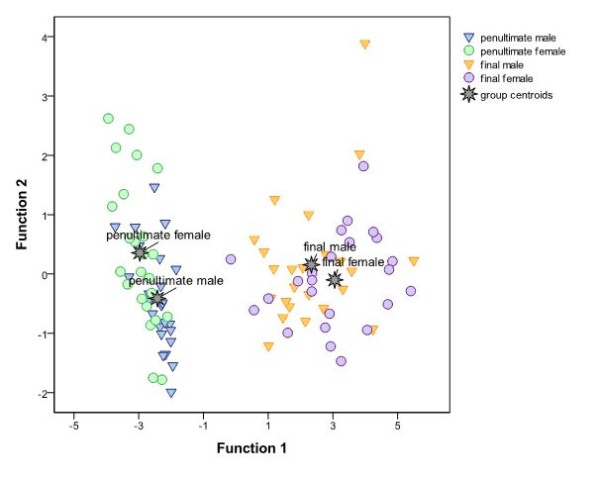Figure 2.

Combined groups plot of a linear discriminant analysis on syllable-wise ratios (stressed: unstressed) of duration, fundamental frequency, and intensity for 24 representative pseudoword quadruples, revealing three discriminant functions. Function 1 explained 98.5% of the variance, canonical R2 = .89, whereas Function 2 explained only 1.1%, canonical R2 = .08 and Function 3 only .4%, canonical R2 = .03. In combination, all three discriminant functions significantly differentiated the conditions, Λ = .10, χ2(9) = 207.91, p < .001. After removing Function 1, the remaining functions still differentiated the conditions significantly, Λ = .90, χ2(4) = 10.17, p = .038. However, Function 3 alone did not differentiate the conditions significantly Λ = .97, χ2(1) = 2.58, p = .108. Note that Function 1 clearly differentiates between both stress patterns. All three phonetic variables (duration, fundamental frequency, and intensity) loaded on Function 1 (r = .93, r = -.48, and r = -.34, respectively).
